Formica cf. pallidefulva (Queen 2):
I caught another pallidefulva group queen today. I'm pretty sure they are both pallidefulva, but I'm not really sure.

Formica cf. pallidefulva (Queen 2):
I caught another pallidefulva group queen today. I'm pretty sure they are both pallidefulva, but I'm not really sure.
Currently keeping:
Tetramorium immigrans, Pogonomyrmex occidentalis
Myrmica punctiventris, Formica subsericea
Formica pallidefulva, Aphaeogaster cf. rudis
Camponotus pennsylvanicus
Camponotus nearcticus
Crematogaster cerasi
Temnothorax ambiguus
Prenolepis imparis
Here are some pictures of my ants. I recently got a new phone, so these should be better than my previous ones.
Myrmica punctiventris in their nest:
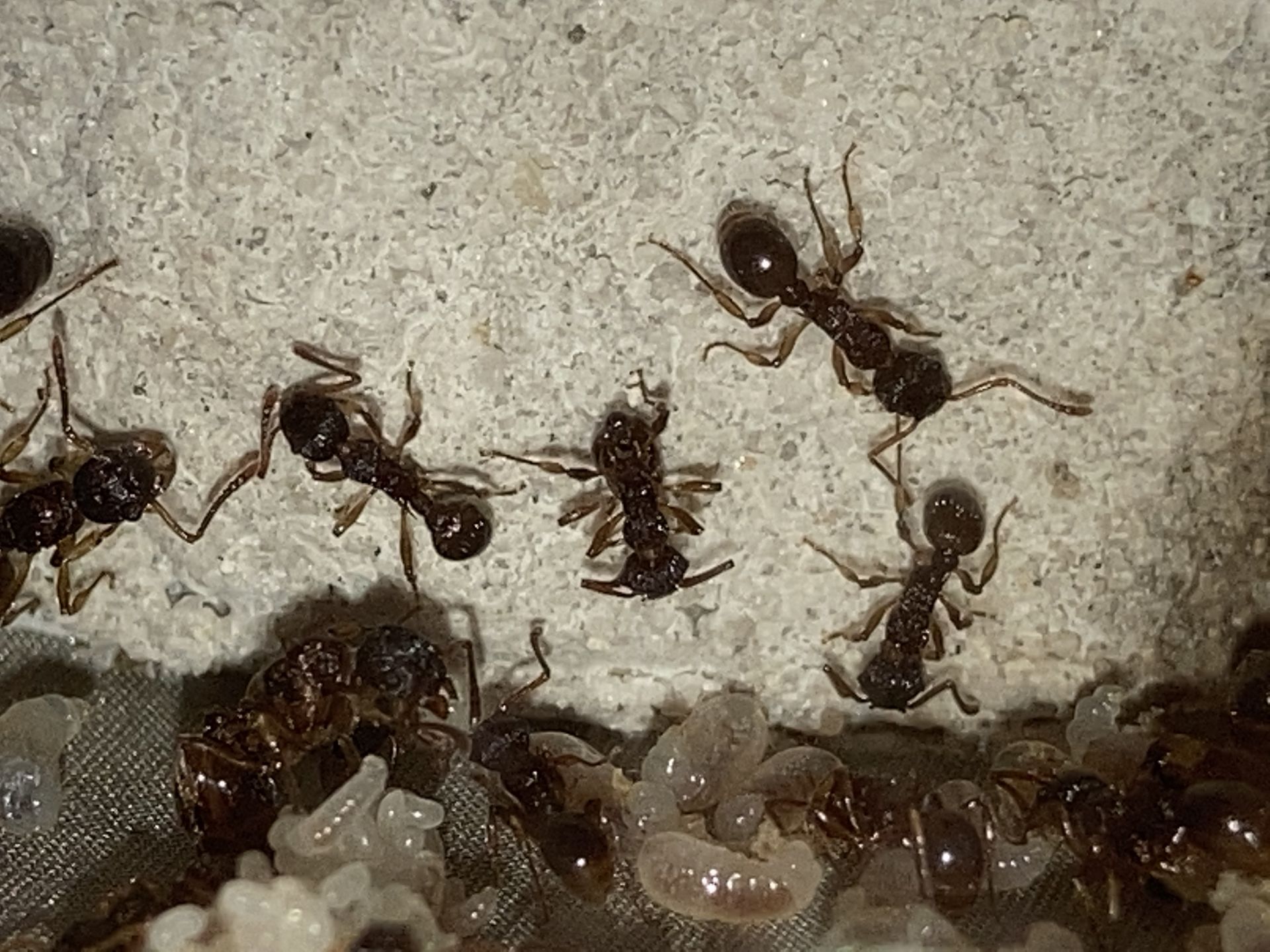
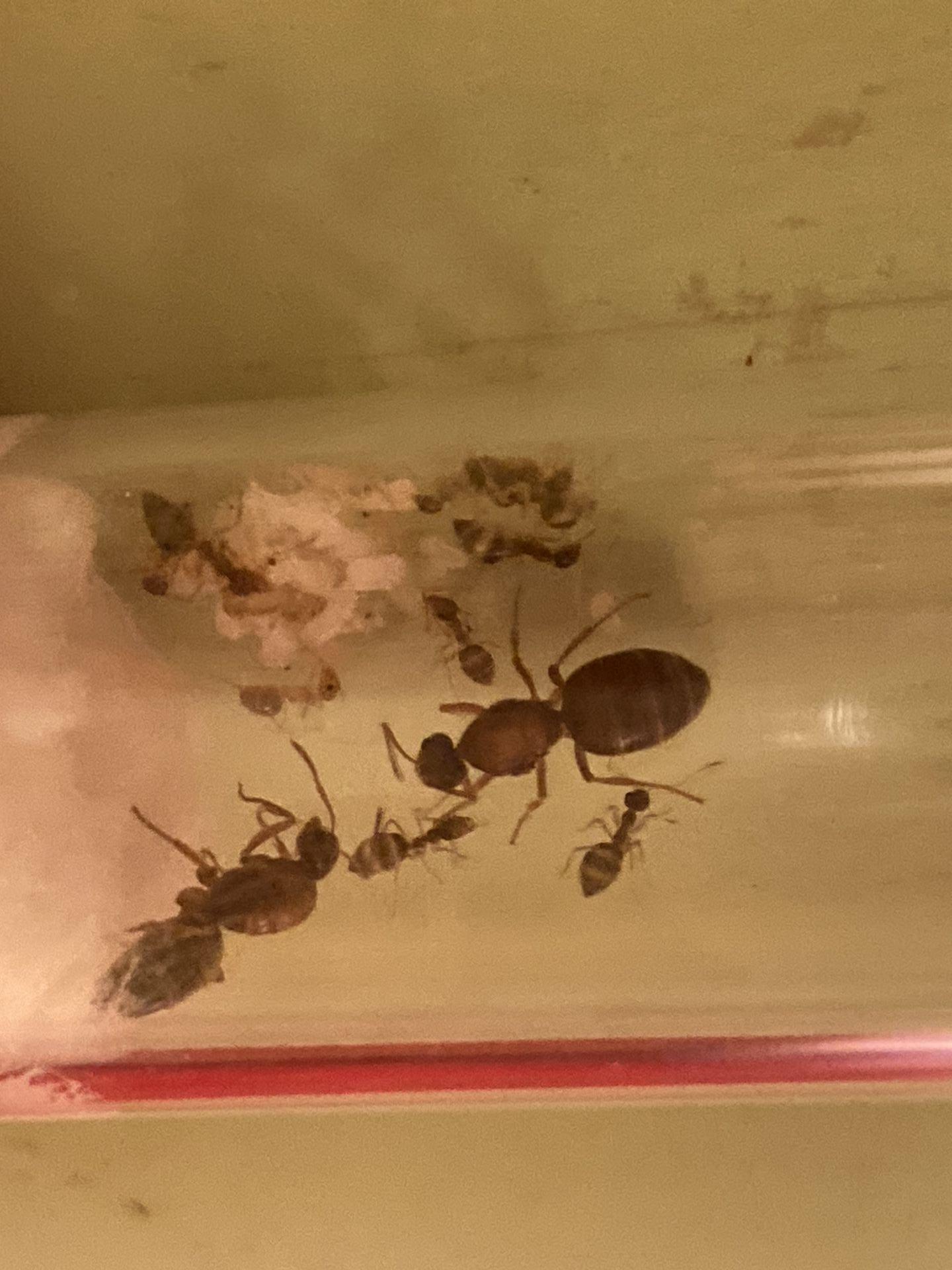
Tetramorium immigrans enjoying some egg whites:
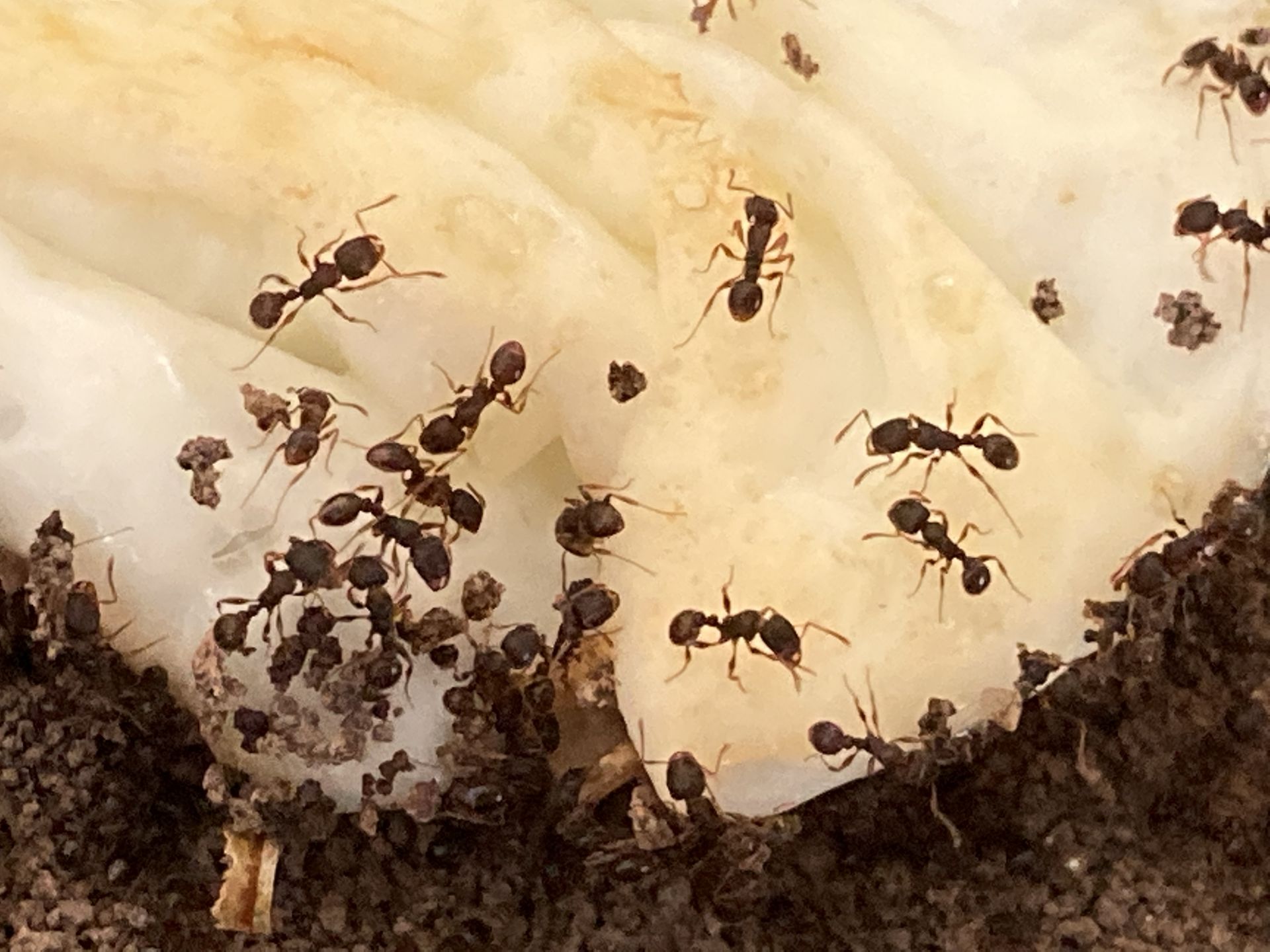
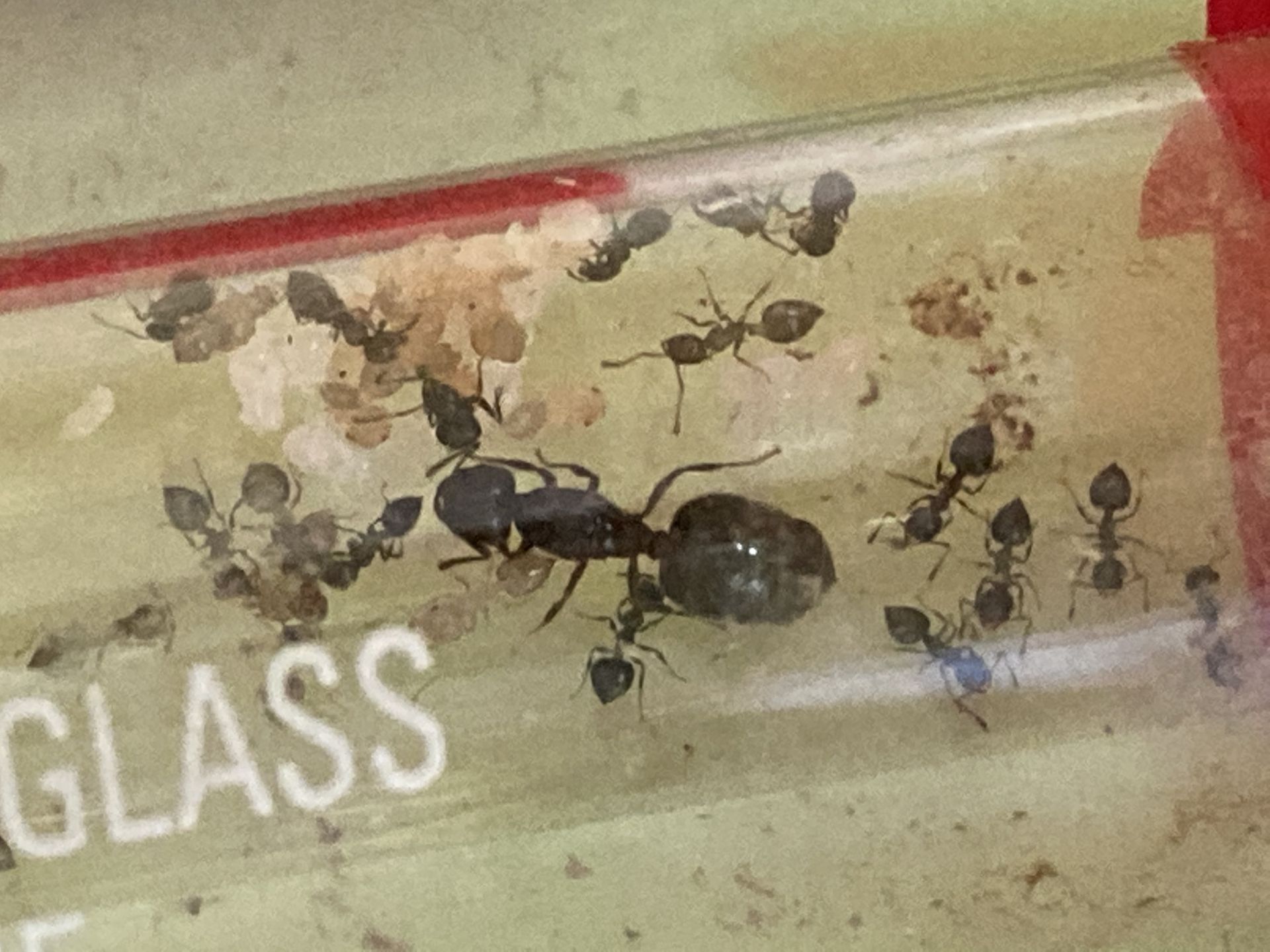
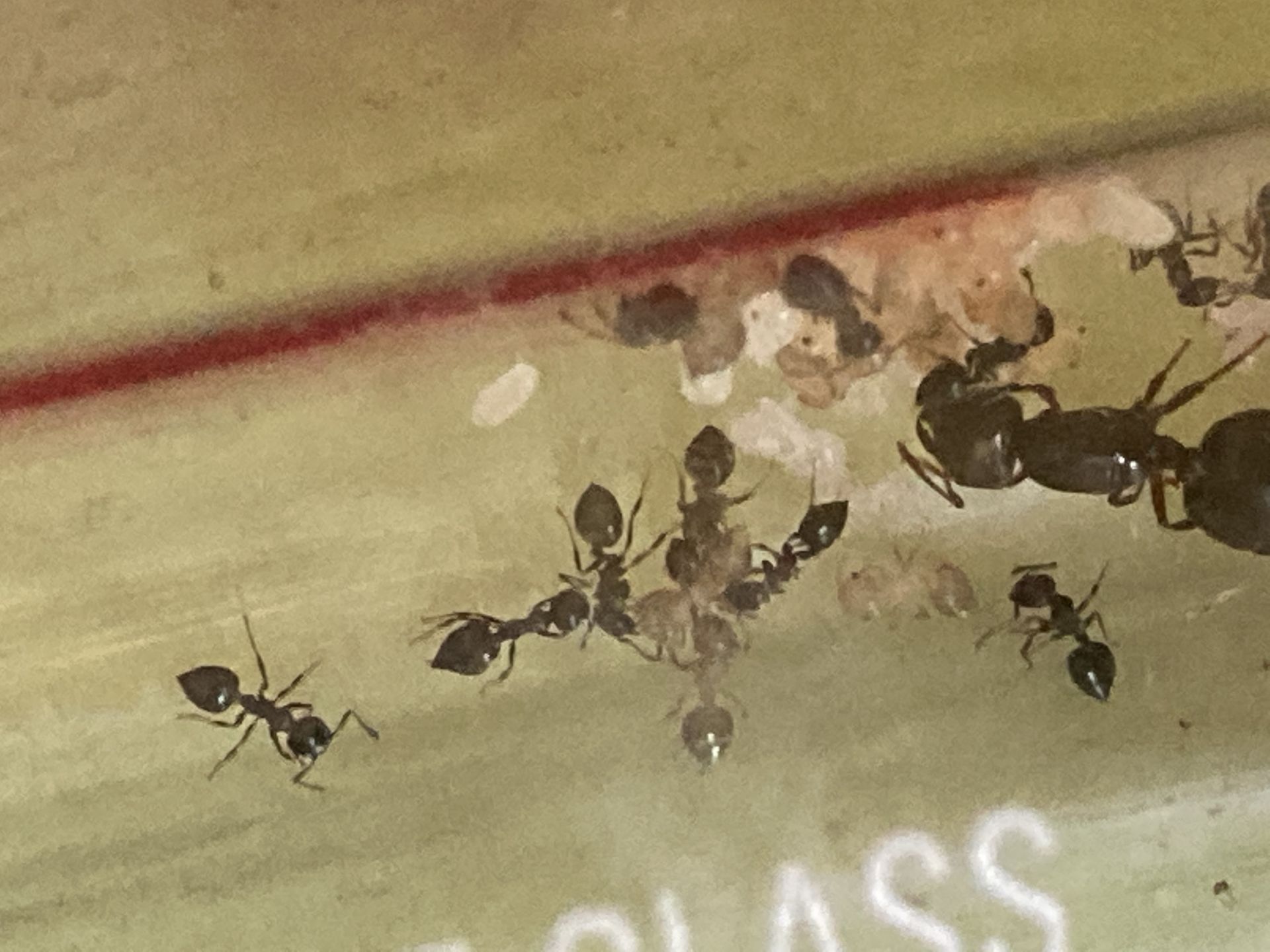
Lasius brevicornis before I traded them away:
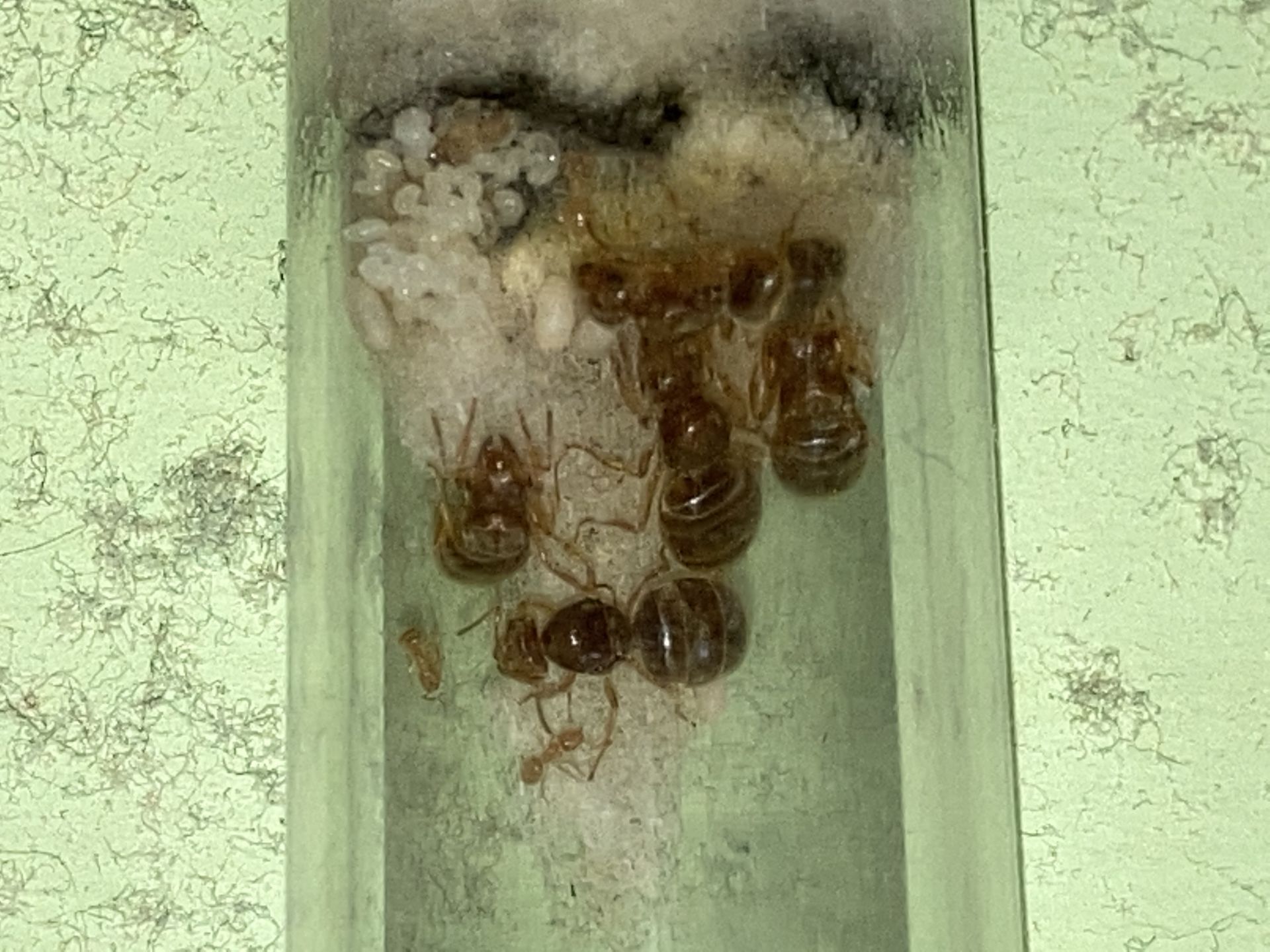
Crematogaster cerasi (Colony 2) before I traded them away:
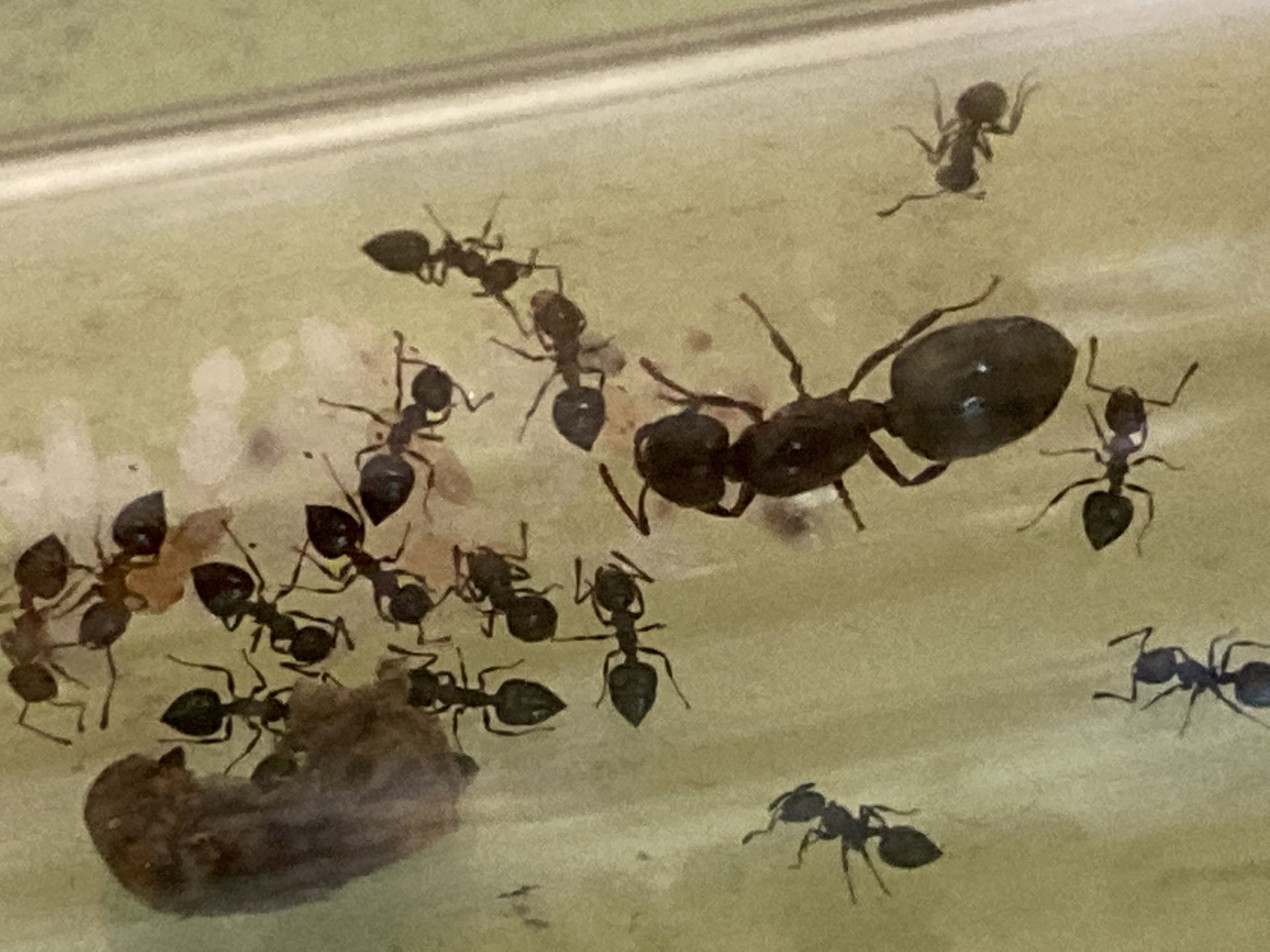
Formica pallidefulva:
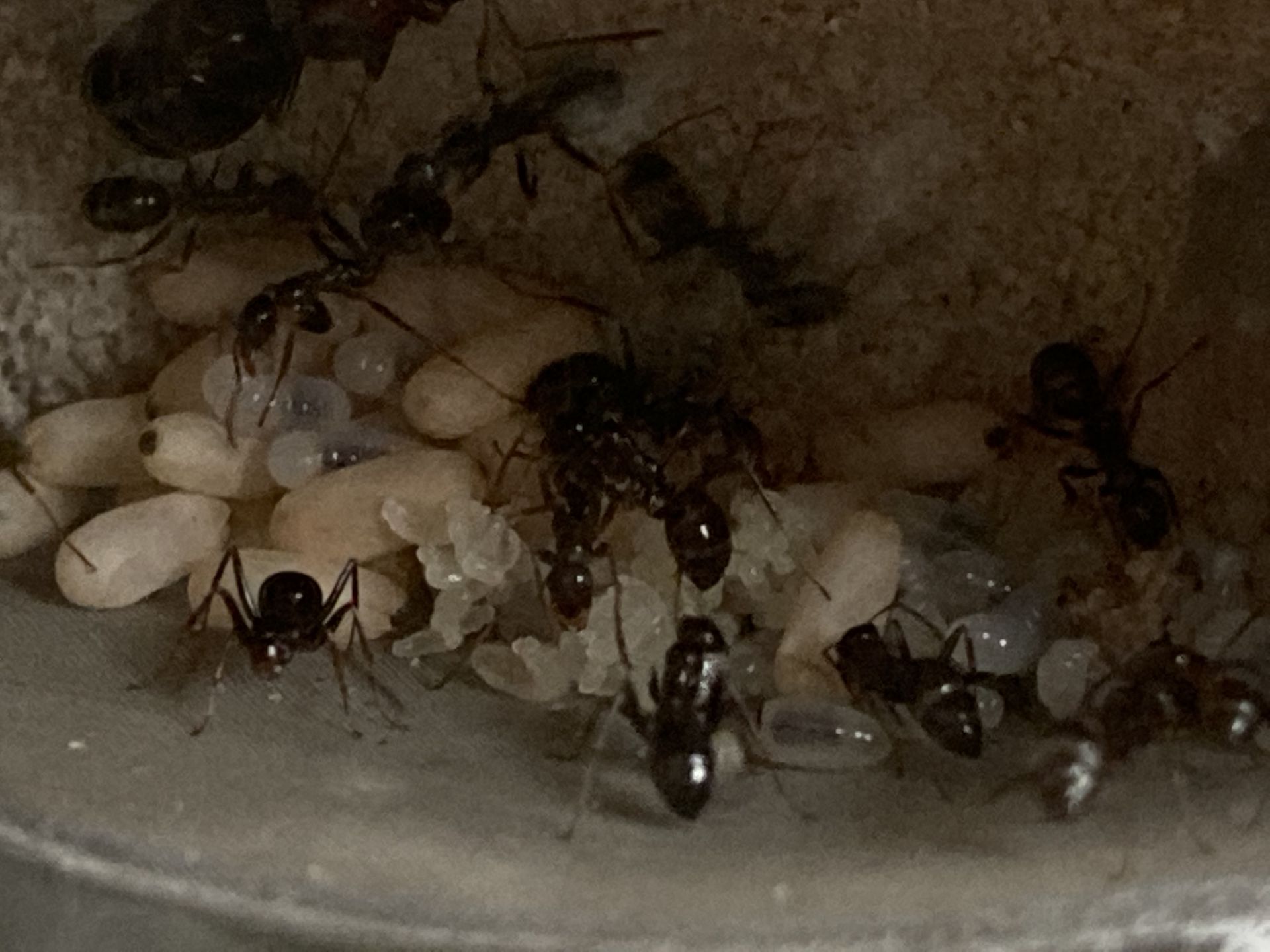
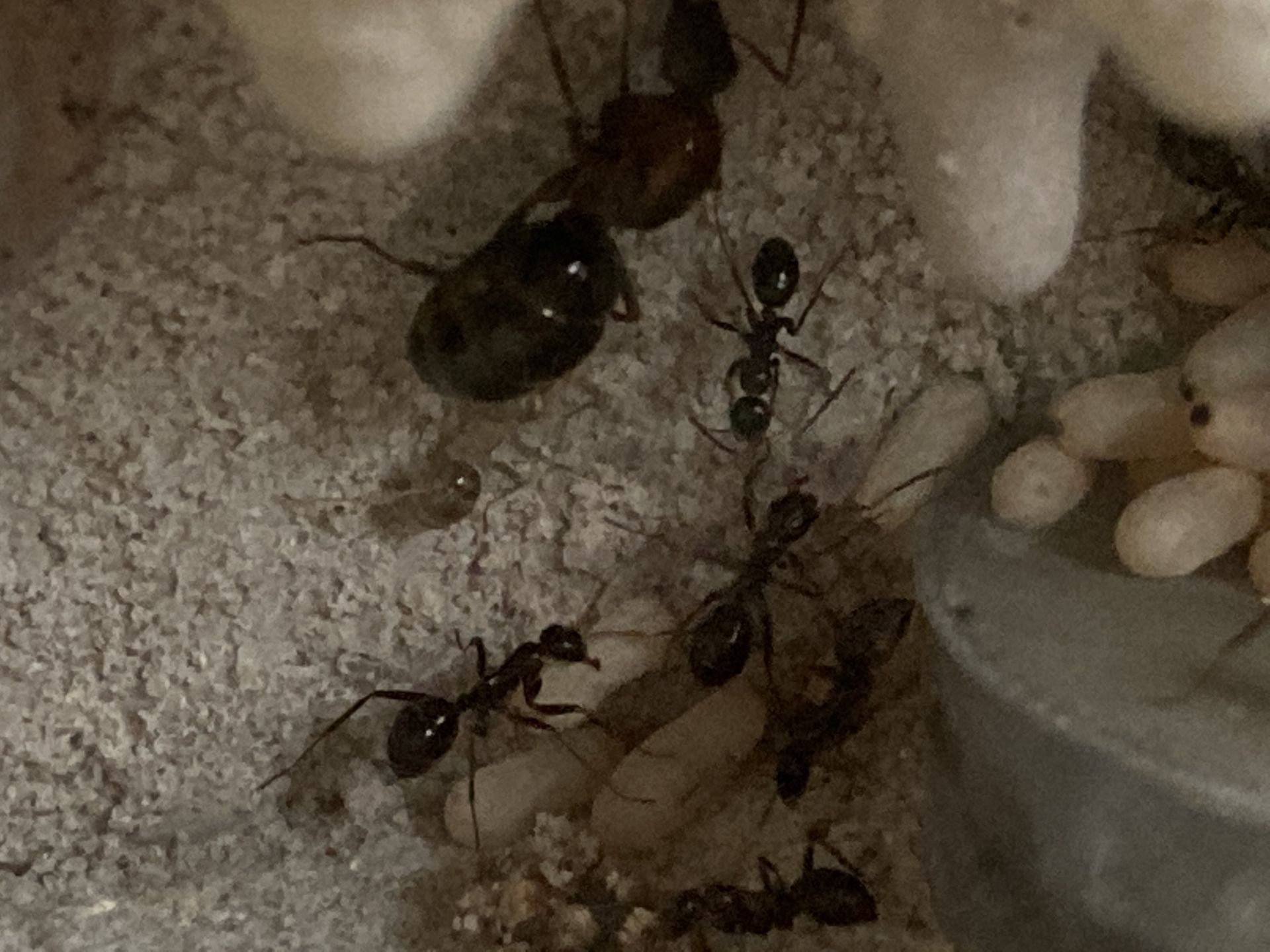
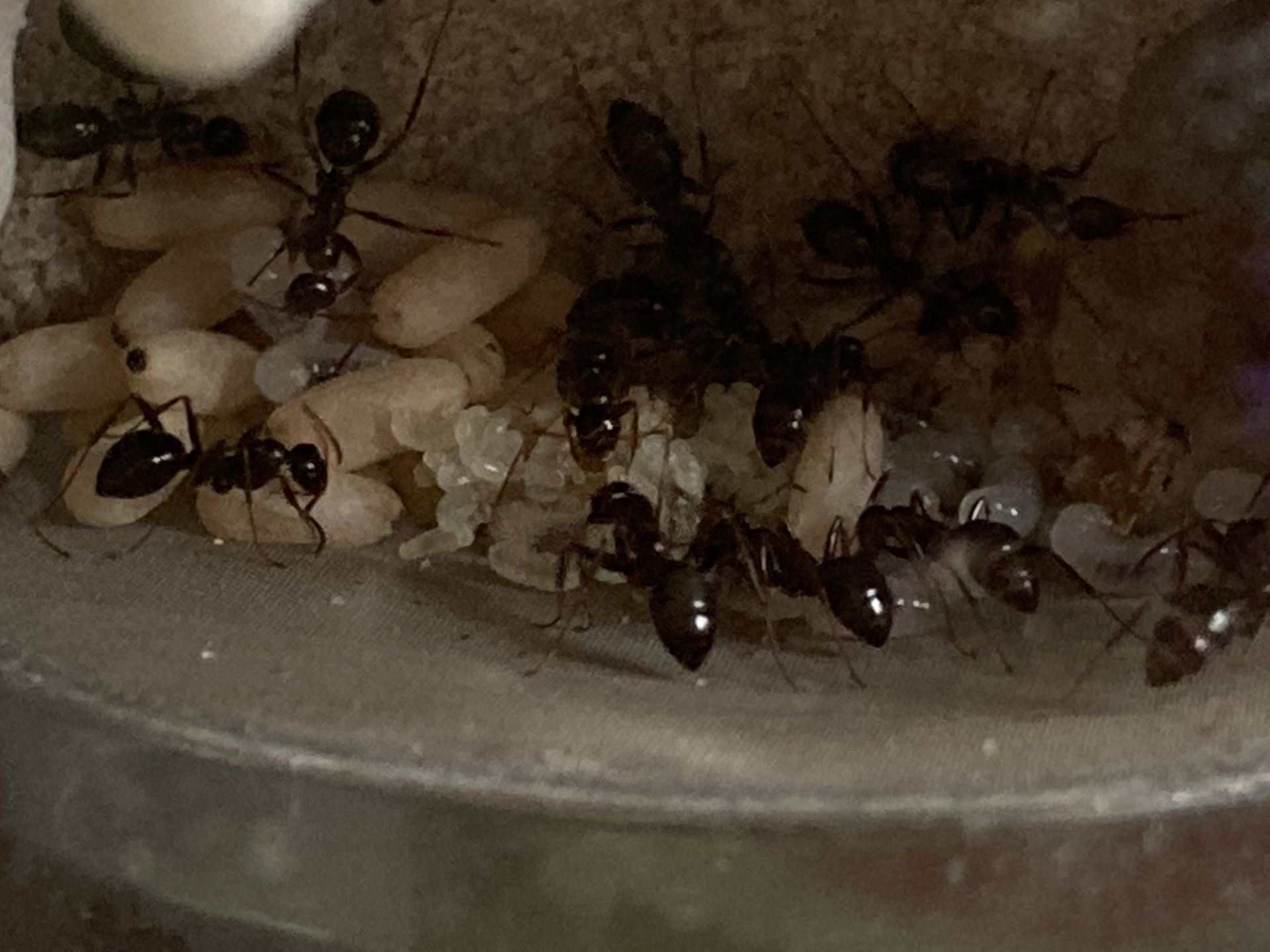
Crematogaster cerasi (Colony 1) in their AC test tube portal setup:
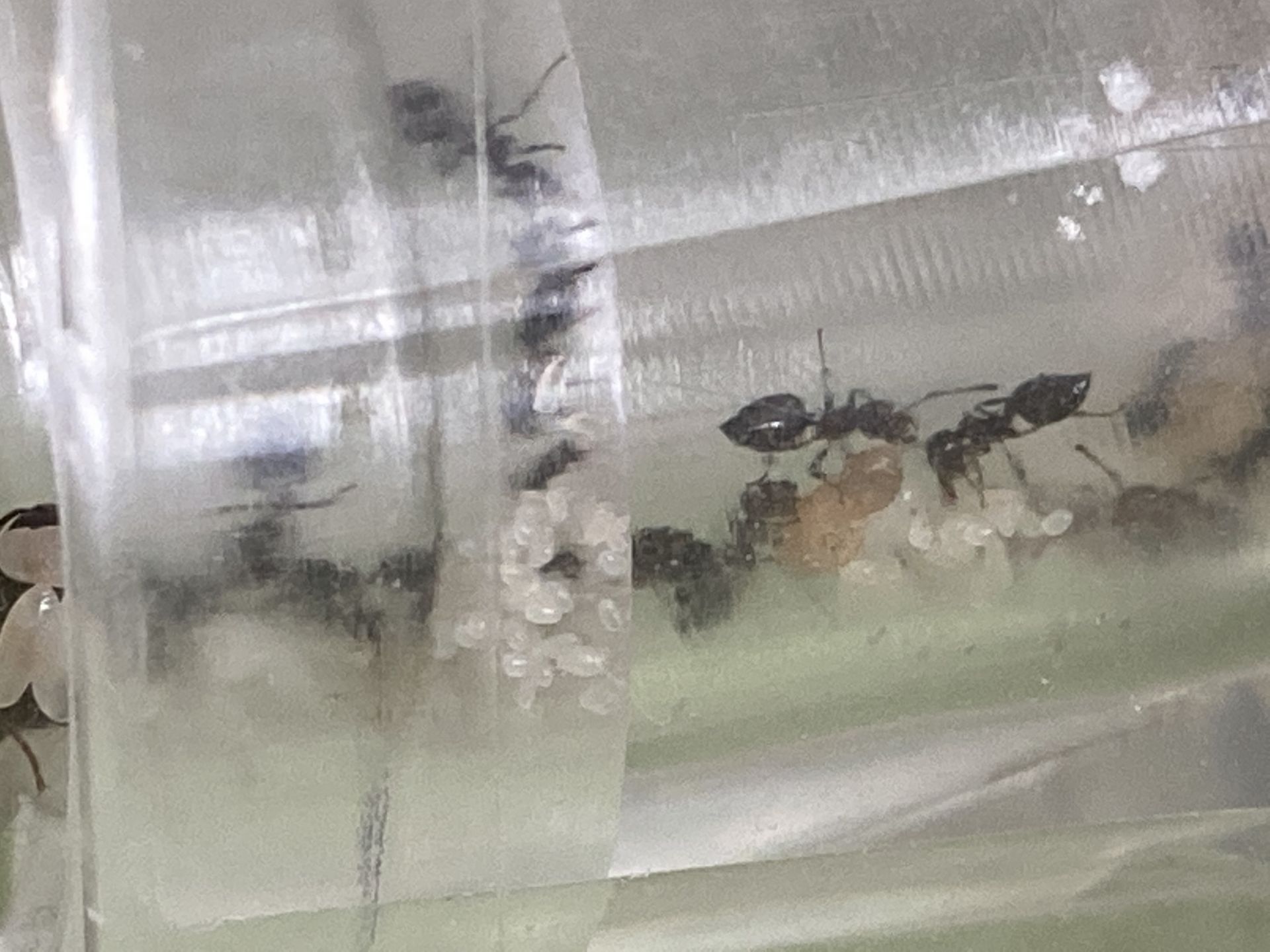
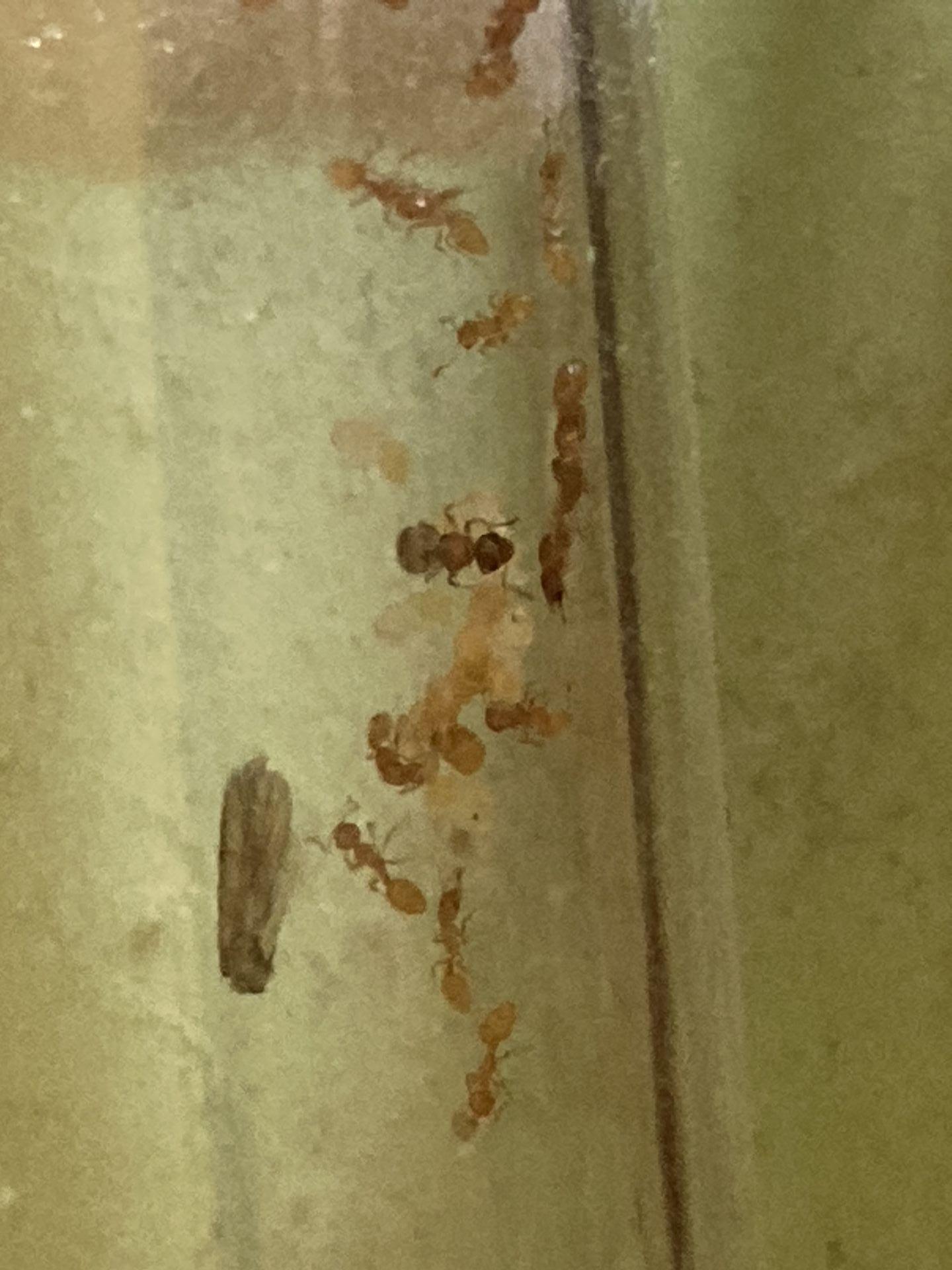
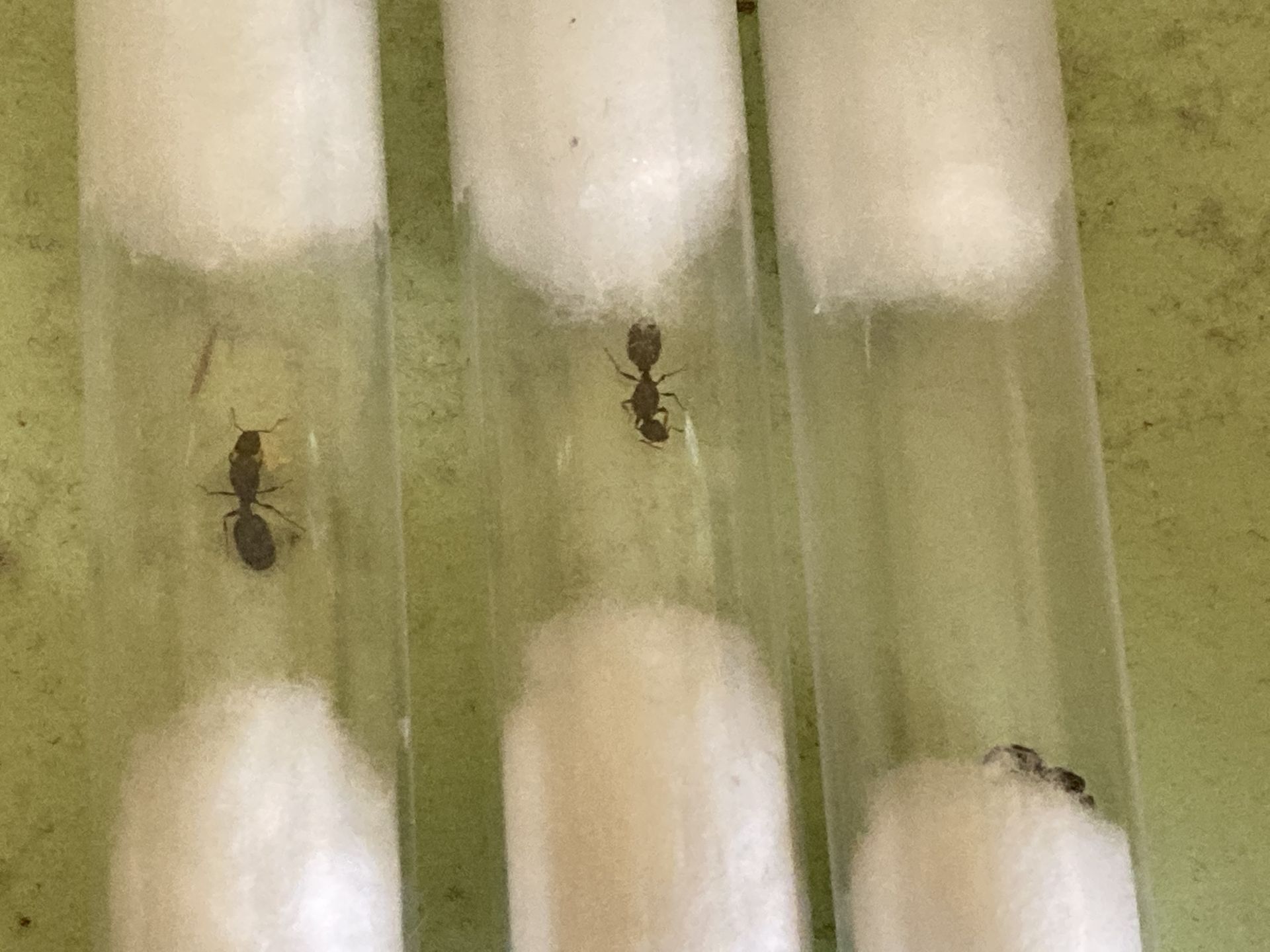
Currently keeping:
Tetramorium immigrans, Pogonomyrmex occidentalis
Myrmica punctiventris, Formica subsericea
Formica pallidefulva, Aphaeogaster cf. rudis
Camponotus pennsylvanicus
Camponotus nearcticus
Crematogaster cerasi
Temnothorax ambiguus
Prenolepis imparis
Edited by ANTdrew, July 13 2020 - 1:29 PM.
Those Crematogastet look great. Good growth!
The largest colony has over 30 workers now.
Currently keeping:
Tetramorium immigrans, Pogonomyrmex occidentalis
Myrmica punctiventris, Formica subsericea
Formica pallidefulva, Aphaeogaster cf. rudis
Camponotus pennsylvanicus
Camponotus nearcticus
Crematogaster cerasi
Temnothorax ambiguus
Prenolepis imparis
Formica cf. pallidefulva (Queen 3):
I caught another one of these queens.
Currently keeping:
Tetramorium immigrans, Pogonomyrmex occidentalis
Myrmica punctiventris, Formica subsericea
Formica pallidefulva, Aphaeogaster cf. rudis
Camponotus pennsylvanicus
Camponotus nearcticus
Crematogaster cerasi
Temnothorax ambiguus
Prenolepis imparis
Formica subsericea (Queen 1):
I caught a subsericea queen today, which I will probably sell.
Currently keeping:
Tetramorium immigrans, Pogonomyrmex occidentalis
Myrmica punctiventris, Formica subsericea
Formica pallidefulva, Aphaeogaster cf. rudis
Camponotus pennsylvanicus
Camponotus nearcticus
Crematogaster cerasi
Temnothorax ambiguus
Prenolepis imparis
Pogonomyrmex occidentalis:
They have two or three pupae and several big larvae. I think they will finally start growing now.
Temnothorax ambiguus (Colony 3):
This is the colony I found in my yard. I released them for what I believe might actually be the second time.
Edited by Antennal_Scrobe, July 15 2020 - 10:31 AM.
Currently keeping:
Tetramorium immigrans, Pogonomyrmex occidentalis
Myrmica punctiventris, Formica subsericea
Formica pallidefulva, Aphaeogaster cf. rudis
Camponotus pennsylvanicus
Camponotus nearcticus
Crematogaster cerasi
Temnothorax ambiguus
Prenolepis imparis
Formica subsericea (Queen 2):
I caught another subsericea queen.
Formica and Tetramorium Queens:
All of my Tetramorium and Formica queens, except for the one I just caught, now have eggs.
Tetramorium immigrans (Queen 2):
The first Tetramorium queen I found this year. She has tons of brood, including larvae.
Currently keeping:
Tetramorium immigrans, Pogonomyrmex occidentalis
Myrmica punctiventris, Formica subsericea
Formica pallidefulva, Aphaeogaster cf. rudis
Camponotus pennsylvanicus
Camponotus nearcticus
Crematogaster cerasi
Temnothorax ambiguus
Prenolepis imparis
Formica pallidefulva (Queen 4):
I caught another one of these.
Currently keeping:
Tetramorium immigrans, Pogonomyrmex occidentalis
Myrmica punctiventris, Formica subsericea
Formica pallidefulva, Aphaeogaster cf. rudis
Camponotus pennsylvanicus
Camponotus nearcticus
Crematogaster cerasi
Temnothorax ambiguus
Prenolepis imparis
I've been catching queens almost every day, without even leaving my yard. Why am I finding more and more queens the more experienced I get?
Currently keeping:
Tetramorium immigrans, Pogonomyrmex occidentalis
Myrmica punctiventris, Formica subsericea
Formica pallidefulva, Aphaeogaster cf. rudis
Camponotus pennsylvanicus
Camponotus nearcticus
Crematogaster cerasi
Temnothorax ambiguus
Prenolepis imparis
Do you combine these?Formica pallidefulva (Queen 4):
I caught another one of these.
"God made..... all the creatures that move along the ground according to their kinds (including ants). And God saw that it was good. Genesis 1:25 NIV version
Keeping:
Formica cf. pallidefulva, cf. incerta, cf. argentea
Formica cf. aserva, cf. subintegra
Myrmica sp.
Lasius neoniger, brevicornis
Do you combine these?Formica pallidefulva (Queen 4):
I caught another one of these.
No, but I would if I caught them on the same day.
Currently keeping:
Tetramorium immigrans, Pogonomyrmex occidentalis
Myrmica punctiventris, Formica subsericea
Formica pallidefulva, Aphaeogaster cf. rudis
Camponotus pennsylvanicus
Camponotus nearcticus
Crematogaster cerasi
Temnothorax ambiguus
Prenolepis imparis
Both of those Formica sp. you have are polygynous.
My Main Journal | My Neivamyrmex Journal | My Ant Adoption | My YouTube
Join the TennesseeAnts Discord Server! https://discord.gg/JbKwPgs
Both of those Formica sp. you have are polygynous.
I know that, but I like to play it safe and only combine queens I catch from the same flight.
Currently keeping:
Tetramorium immigrans, Pogonomyrmex occidentalis
Myrmica punctiventris, Formica subsericea
Formica pallidefulva, Aphaeogaster cf. rudis
Camponotus pennsylvanicus
Camponotus nearcticus
Crematogaster cerasi
Temnothorax ambiguus
Prenolepis imparis
I almost caught another pallidefulva queen just now. Would have been my third queen today.
Currently keeping:
Tetramorium immigrans, Pogonomyrmex occidentalis
Myrmica punctiventris, Formica subsericea
Formica pallidefulva, Aphaeogaster cf. rudis
Camponotus pennsylvanicus
Camponotus nearcticus
Crematogaster cerasi
Temnothorax ambiguus
Prenolepis imparis
What happened to it? Did it get away?
Yeah, it got away. Formica queens are very fast.
Currently keeping:
Tetramorium immigrans, Pogonomyrmex occidentalis
Myrmica punctiventris, Formica subsericea
Formica pallidefulva, Aphaeogaster cf. rudis
Camponotus pennsylvanicus
Camponotus nearcticus
Crematogaster cerasi
Temnothorax ambiguus
Prenolepis imparis
Prenolepis imparis (Two Queen Colony):
Doing amazingly, with many swollen replete workers. I think their numbers are somewhere between 15 and 20, but I haven't counted in a while. I've fed them raw honey and a cricket leg, both of which they liked.
Prenolepis imparis (Three Queen Colony):
I traded this colony to AnthonyP163 today.
Aphaenogaster cf. rudis (Queens 1 and 2):
I got two mated Aphaenogaster queens from AnthonyP163 today in exchange for a Prenolepis colony. They are what one would call "Aphaenogaster rudis", but there are actually several visually identical species that go by this name. Queen 1 has a decent sized ball of eggs, and Queen 2 laid her first egg soon after I got home.
Currently keeping:
Tetramorium immigrans, Pogonomyrmex occidentalis
Myrmica punctiventris, Formica subsericea
Formica pallidefulva, Aphaeogaster cf. rudis
Camponotus pennsylvanicus
Camponotus nearcticus
Crematogaster cerasi
Temnothorax ambiguus
Prenolepis imparis
Pogonomyrmex occidentalis:
The queen's second worker eclosed yesterday, and a third one is on the way. There are several pupae and large larvae in this colony right now.
Currently keeping:
Tetramorium immigrans, Pogonomyrmex occidentalis
Myrmica punctiventris, Formica subsericea
Formica pallidefulva, Aphaeogaster cf. rudis
Camponotus pennsylvanicus
Camponotus nearcticus
Crematogaster cerasi
Temnothorax ambiguus
Prenolepis imparis
Aphaenogaster cf. rudis (Queens 1 and 2):
Both queens now have egg piles, though Queen 1 still has more. Queen 2, however, has laid quite a few eggs considering only 3 days have passed.
Formica pallidefulva (Two Queen Colony):
This colony has gotten quite big.
Crematogaster cerasi (Colony 5):
This is the queen I found in my yard a few weeks ago, which I am selling. She has three workers as of today.
Formica pallidefulva and subsericea (Various Queens):
I believe some of these queens might have small larvae, but it's hard to tell because they always sit on top of their brood.
Myrmica punctiventris:
Another batch of workers is on the way.
Currently keeping:
Tetramorium immigrans, Pogonomyrmex occidentalis
Myrmica punctiventris, Formica subsericea
Formica pallidefulva, Aphaeogaster cf. rudis
Camponotus pennsylvanicus
Camponotus nearcticus
Crematogaster cerasi
Temnothorax ambiguus
Prenolepis imparis
 |
Ant Keeping →
Ant Keeping Journals →
Stubyvast's Lasius americanusStarted by Stubyvast , Apr 18 2025 |
|

|
|
 |
Ant Keeping →
General Ant Keeping →
A Nest IdeaStarted by cooIboyJ , Mar 22 2025 |
|

|
|
Ants & Myrmecology →
General →
Overcaring - Killing with KindnessStarted by rptraut , Mar 7 2025 |
|

|
||
Market Place →
General Market Place →
Trade: 3D-Printing Service for your Queens/Colonies (Los Angeles, CA)Started by JonathanH , Mar 4 2025 |
|

|
||
Market Place →
General Market Place →
Ender Ants: Naturalistic Formicariums & MerchandiseStarted by Ender Ants , Feb 7 2025 |
|

|
0 members, 2 guests, 0 anonymous users